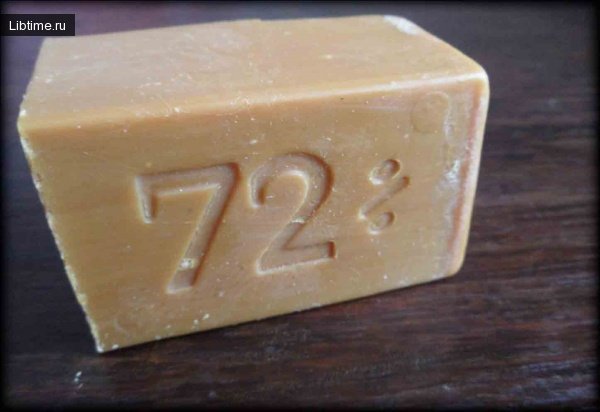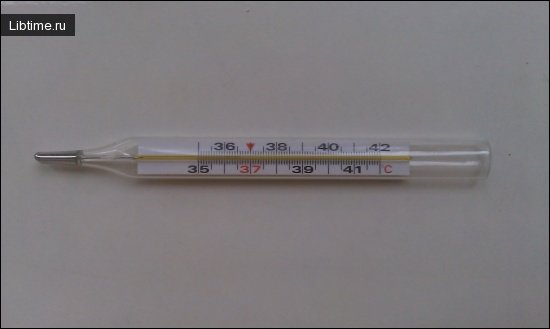Centrifugal compressor
Nowadays mechanical engineering, as well as other branches, industry, is experiencing difficulties in providing raw materials, material and energy resources. This causes the necessity to develop more resource-saving technologies, quickly introduce them into production and fulfill them qualitatively.
Rational combination of cost and quality of engineering products benefits the national economy of the country also in their operation. Thus, the centrifugal compressor, as a constituent unit of a gas pumping unit, transfers its cost of gas transportation and, consequently, to the cost of gas for consumers.
Saving of materials, raw materials, energy in the production of engineering products reduces their cost and, therefore, makes them more profitable for enterprises - consumers of these products. Representatives of all professions and specialties that are involved in the creation of machines, and in particular compressor GTs2-580/51-76, can make their contribution to the work to improve the quality and reduce the cost of the product.
For example, a technologist can develop a better technological process with the use of progressive equipment, technological equipment, cutting tools, etc. A designer can improve the manufacturability of the product design and thereby simplify machining, etc.
Most mechanical engineering products are complex assembled structures consisting of dozens and hundreds of individual parts. In order to achieve efficient operation of the entire unit, it is necessary to improve each of its components in accordance with its functional purpose and working conditions in the assembly.
The task of the technologist is to develop a more perfect technological process, and more globally - to improve the system of technological preparation of production.
Analysis of the service purpose of the machine, assembly, part. Description of operating conditions of the part
Centrifugal compressor GTs2-58051-76 with a vertical split of the body is designed to compress gas coming through the suction pipeline to the required pressure and supply it to the discharge pipeline.
The principle of operation of a centrifugal compressor is that gas is supplied to the suction cavity under initial pressure: when the impeller rotates on the inlet side, a rarefaction is formed, as a result of which the gas flows through the suction pipeline into the channels between the impeller blades.
In the impeller under the action of centrifugal and gas dynamic forces arising from the flow of the blades, there is an increase in pressure and an increase in gas velocity; entering from the impeller into the diffuser, the gas significantly reduces its velocity and increases pressure: in the next stage, the gas of increased pressure enters through the return guide apparatus.
Having passed all stages, the gas enters the outlet volute and is directed to the discharge pipeline.
The main technical characteristics of the compressor are given in Table 1.
Table 1
| Parameter name | Value |
| Suction capacity m3/s(m3/min), not less than | 9.68 (580,6) |
| Initial nominal pressure, MPa (kgf/cm) | 4.97 (50.7) |
| Final nominal pressure, MPa (kgf/cm) | 7.45 (76) |
| Pressure ratio | 1,5 0,015 |
| Compressor nominal rotor speed, s'1 (rpm) | 83.33 (5000) |
| Polytropic efficiency of compressor, %, not less than | 84 |
The main functional units of the compressor are rotor, rotor end seals, inner casing, support bearing, thrust bearing, oil pump unit.
The thrust bearing is one of the rotor shaft supports, which supports both radial and axial loads and serves to fix the shaft in a certain position in the assembly. The accuracy of the rotor shaft axis location relative to the compressor base elements depends on the accuracy of the bearing fit in the compressor cover.
Rotor shaft shaft rotates with high frequency (n=5000 rpm), its mass, as well as the mass of the parts installed on it is large, so the loads on the shaft supports will be large. It follows from this that the thrust bearing must provide accurate positioning of the shaft, otherwise inertial loads will occur during operation, which will lead to rotor vibrations, which is unacceptable. A special sensor is installed on the shaft to monitor vibrations.
The thrust bearing consists of two parts: a support bearing, which absorbs radial loads and a thrust bearing, which absorbs axial loads. In the radial (thrust) bearing, self-aligning segmental inserts are used to prevent vibrations, which, due to the formation of several wedge-shaped clearances in the bearing, ensure stable operation of the bearing.
Along with vibration-free operation, the advantage of bearings with segmented liners is the possibility of self-alignment, which prevents the occurrence of edge contact between the shaft journal and the bearing.
Bearing lubrication is forced. The grease is supplied through holes in the upper and lower halves of the housing. The support bearing consists of a steel housing split in the horizontal plane, both parts of which are connected by bolts, support pads, which are held in the housing by special grooves made in split sleeves.
The pads are locked against rotation relative to the housing by pins. The bearing housing in the assembly unit performs a number of functions.
- Firstly, it is the basic part of the whole assembly, i.e. it determines its position in the product.
- Secondly, it is the base part, i.e. it determines the position of other parts in the assembly, namely, the split bushings and bearing pads, which are the most critical elements of the bearing.
- Thirdly, the bearing housing is part of the system for supplying lubricant to the actuating (rubbing) surfaces, for which purpose a number of holes are made in it.
Functions, which the part performs, determine its design features. The main design bases of the part are: surface - end face ∅425H6/∅230, surface 2 hole ∅425, length 7mm, surface - pin hole ∅12, length 13mm.
According to the number of deprived degrees of freedom, the surface is a mounting base and deprives the part of three degrees of freedom - movement along one axis and rotation around the other two axes: the surface is a double supporting base, which deprives the part of two degrees of freedom - movement along two axes: the surface is a supporting technological base, which deprives the part of rotation around one axis.
OKBs are the most critical surfaces of a part. The accuracy of the location of the entire assembly in the product, wear of rubbing surfaces, reliability and durability of bearing operation depend on them.
The role of auxiliary design bases (ADB) is performed by the surfaces: hole ∅216H7; pin hole ∅10H7, 12mm deep; end ∅420/∅315g6, - outer cylindrical ∅315g6, 8mm long, - pin hole ∅10H7, 10mm deep; - end ∅315g6/∅230H7, - pin hole ∅12 with depth 13mm; - hole ∅23ON7; - end ∅239/∅23ON7; - end ∅239/∅218; surface - end ∅226/∅218mm.
The listed surfaces determine the position of not only one part, but several parts. Thus, surfaces 4 and 5 (inner cylindrical surface and pin hole) are the bases for segmental support pads. Surface 4 deprives the pads of four degrees of freedom and is a double guide base. Surface 5 deprives the pads of two degrees of freedom and is a double support technology base.
Surfaces 6,7 and 8 (flat face, outer cylindrical surface and pin hole) are used to base the thrust bearing housing. Surface 6 deprives the housing of three degrees of freedom, it is the most developed and is a setting base, surface 7 has the form of a ring, deprives the housing of two degrees of freedom and is a double bearing base.
Surface 8 deprives the part of one degree of freedom and serves as a support base. Surfaces 9 and 10 (end and pin hole) participate in the basing of the bearing ring of the thrust bearing, with surface 9 depriving it of three degrees of freedom and is a setting base, and surface 10 - one degree of freedom and performs the function of a support base.
On the surfaces I, 12, 13 and 14 is carried out basing of two split bushings, which hold the bearing shells. Surface 11 is a double support base that deprives the part of two degrees of freedom. Surfaces 12, 13, 14 are planes that deprive the bushings of three degrees of freedom and act as mounting bases. There is a surface in the bearing housing that performs an auxiliary function and appears in the part temporarily.
This is the part parting plane - the surface. The existence of this surface means that the part consists of two halves. Only this design allows the assembly of the unit. For example, the split bushings 10 (see Appendix B) can only be installed in the housing half. Similarly, the bearing inserts, which are fixed in special grooves closed on both sides, can be installed only in the cut part.
At a certain stage of the manufacturing process, the halves of the part are joined together. This is done with the help of prism bolts. Pair through holes in the upper and lower halves ∅22H7 - surface 16 are made in the part for the prism bolts. This surface is used to fit very precise prism bolts.
Surface 17 - hole ∅24, coaxial to the hole ∅22H7, serves to reduce the length of the seating surface and thus to reduce the influence of errors of its shape and location on the accuracy of the joint. Surface 18 - sharpening ∅34x2 under the bolt head in the upper half and ∅46x2 under the lock washer in the lower half are standard design elements for bolt connection.
The surfaces 19 and 20 are formed by recesses on the outer cylindrical surface of the housing. The pits are necessary to ensure that the protruding parts of the bolted joint (the head of the prism bolt on one side and the nut on the other side) do not protrude above the surface of the workpiece (this determines the depth of the pits). If this condition is not met, machining of the outer surface of the housing will not be possible.
Fixation of the thrust bearing
Fixation of the thrust bearing in the workpiece takes place in three stages: 1) preliminary fixation of the support bearing housing to the compressor cover; 2) connection of the thrust bearing to the support bearing in the product; 3) final fixation of the whole unit relative to the compressor cover. For preliminary fixation in the bearing housing there is a surface 21 - hole ∅14mm, through hole.
For uniform distribution of fixing forces, two holes are made, located symmetrically relative to the axis of the part. In order that the head of the fixing bolt does not protrude above the surface of the housing, a recess ∅32x11 - surface 22 is made on one side of the hole.
The support bearing and thrust bearing are connected by fastening threaded parts, which are screwed into threaded holes in the housing of the support bearing. These threaded holes are M12-7H in diameter, 20mm deep and form the surface 23.
For the final fixation of the unit in the product, and the part is formed surface 24, which is twelve through holes ∅22, distributed evenly over the entire surface of the bearing.
Such a large number of holes (and, accordingly, fasteners) is due to the fact that the unit has a large mass, takes significant loads, and its seating surface has a width of 7mm, which is not enough for a stable position of the unit, so without reliable fixation it will not hold in a given position during operation.
Lubricant is supplied through holes in the upper and lower halves of the housing. Oil is poured through the holes in the end face of the thrust bearing, as it is mounted outside the unit and has surfaces open to the grease supply.
Next, oil enters the thrust bearing, namely the 4 through holes ∅22 which form the surface 25. Then the oil accumulates in an annular cavity with four selections 15 mm deep, radius 20 mm - surfaces 26, 27, 28 and 29. From this cavity through special channels oil moves to the support pads.
These channels are five, according to the number of pads. The channels are formed by surfaces: 30 - hole ∅12, depth 55mm; 31 - hole ∅12, depth 32mm; 32 - hole ∅12, depth 50mm; 33 - hole ∅12, depth 52mm. Surfaces 32 and 33 intersect at right angles, but surfaces 30 and 31 do not intersect at right angles, as this is due to the design of the part.
The part has a large mass, that is why it is lifted with the help of lifting and transportation means (crane). Slinging of the part is carried out with the help of a special eyebolt. For this purpose a hole for eyebolt M12-7H is made in the part - surface 34.
Due to the specific design of the eyebolt, auxiliary elements are made on the outer side of the hole - surfaces 35, 36. During operation of the assembly the hole is closed with a threaded plug to prevent oil from flowing out.
Surfaces 37 - hole ∅239, length 16mm, 38 - end ∅239/∅226, 39 - outer cylindrical surface ∅226, length 4mm, together with surface 12 form a closed annular oil bath in which the used oil accumulates.
From the oil bath, lubricant flows outwardly through holes in the upper and lower halves of the housing. Three holes are located vertically, in the lowest part of the housing, where gravity accumulates the most lubricant.
One hole is located in the lower half, at an angle of 40° to the vertical axis. Two more holes are located in the upper half, symmetrically with respect to the vertical axis, at an angle of 40° to it. A total of six ∅8 holes are provided for oil flow, which form the surface 40.
For even distribution of oil between the support and thrust bearings, channels are provided through which lubricant can be communicated between them in case of excess or lack of it in any part of the bearing. The role of such a channel is performed by holes: ∅14, 25mm deep, surface 42 and hole ∅8, through surface 43, which intersect at right angles.
For technological reasons the hole ∅8 is made through, i.e. it comes out on the outer cylindrical surface of the bearing housing so that oil does not flow out, from the outer part of the hole is closed with a threaded plug. To allow oil to enter the channel, the bore must be located between the two bearing pads. For this reason, the axis of the bore is not radial, but at an angle of 8° due to the design of the unit.
The threaded bore is formed by the surface 45, and the surface 44 is sharpened, which serves to increase the manufacturability of the bore, namely provides a normal entry of the tool. Electrical wires are attached to the bearing housing to monitor the compressor performance and the parameters of the working environment (temperature, vibrations, etc.).
In order to attach very sensitive electrical devices on the outer surface of the housing there are: a 20x20mm bald spot - surface 46 and a threaded hole M6-7H, 13mm deep, the axis of which is located in the center of the bald spot - surface 47.
Fitting bolts that connect the two halves of the part are stopped from unscrewing by lock washers (according to GOST 13465-77), for this purpose there is a hole ∅7, 7 mm deep near each bolt - surface 48.
Other surfaces (49-53), including chamfers, are used to design the configuration of the part and have no special purpose. Working conditions of the bearing are heavy, as it supports a high-speed, highly loaded shaft. It is subjected to high radial loads, high rotor speed causes heating of bearing elements adjacent to it.
The need for long continuous operation can cause fatigue phenomena in the material of the unit's actuating elements (pads). During operation, the bearing housing remains stationary relative to the rotating load and therefore experiences local loading.
The design of the part is such that the stresses from the clamping force are distributed uniformly throughout its entire volume. The permissible heating temperature of the part is T=100°C. It is not allowed to work in a dusty environment to avoid dust on the friction surfaces.


